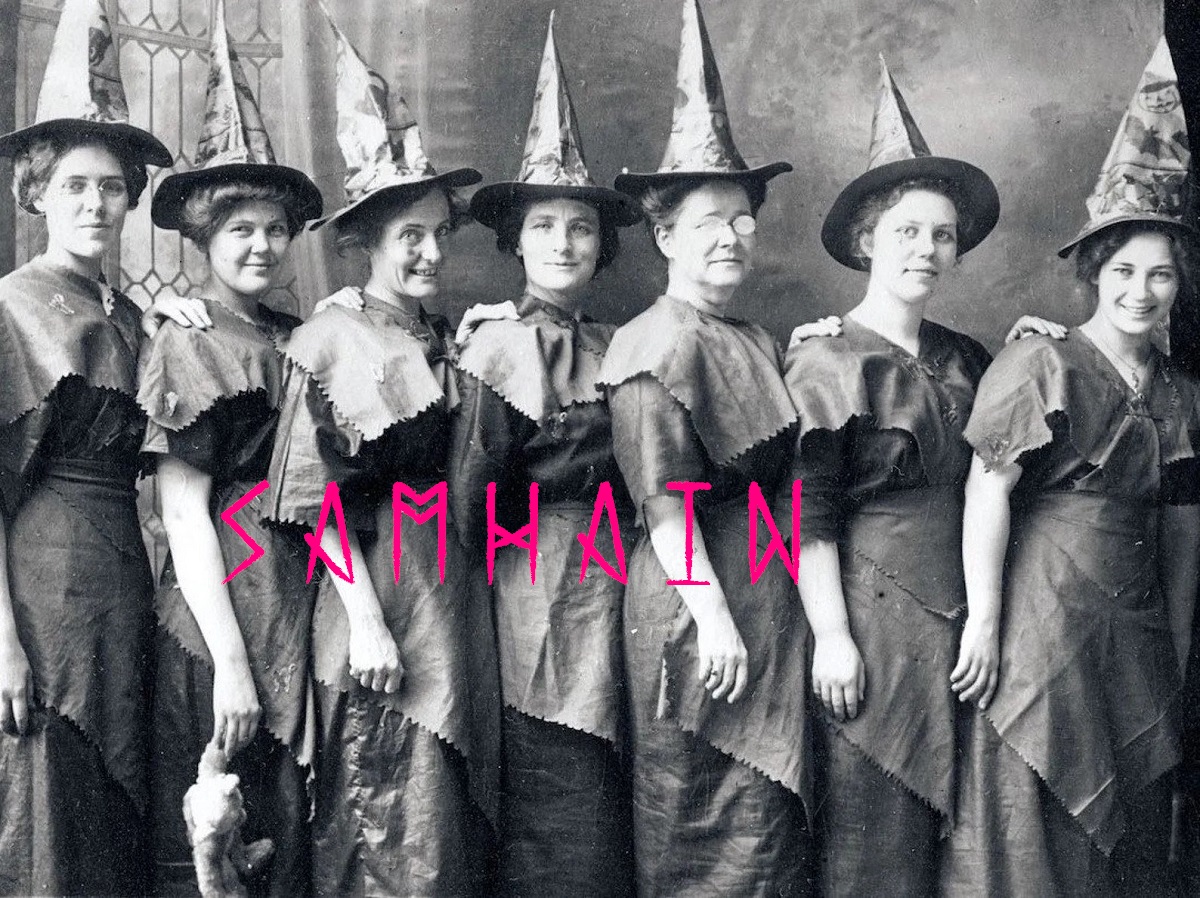
Samhain (pronounced “SAH-win”) comes from the pagan religious festival celebrated by ancient Celts. Observed from October 31st to November 1st, this is the time when the veil between the physical and spirit world is at its thinnest, allowing us closer connection with the departed.
The Celtic festival of the dead honored the Lord of Death, Samana, which the Irish called the ‘Vigil of Saman.’ In the Wheel of the Year, Samhain marks the beginning of the season of death. Winter was seen as the arrival of the powers of destruction: hunger, cold and winter storms. Brigid, goddess of agriculture, enters her crone phase and relinquishes her power over the earth.
Samhain occurs at the midpoint between the Autumn Equinox (Mabon) and the Winter Solstice (Yule). The ancient Celts saw Samhain as the most important of the four fire festivals of the year. To celebrate this magical eve, fires were lit on the sidh, or fairy mounds, where the spirits dwelled. This marked the time when the harvest was gathered. Afterwards, several days were spent eating huge feasts and drinking to excess.
In the 19th century Irish and Scottish Celts immigrated to North America, and the holiday morphed into what we know as Halloween today. Halloween is its own separate holiday, though many use Samhain and Halloween interchangeably. While Halloween stems from the same pagan holiday activities, its purpose remains secular. Dressing up in spooky costumes, going trick-or-treating, watching scary movies and perhaps fiddling around with a spirit board all constitute some typical Halloween activities that connect with this liminal time of year when the veil is at its thinnest and connection with the spirit world is most potent. It goes without saying that this is many witches’ favorite holiday!
In the 70s, witches revived Samhain, and it was further popularized by Wicca in the 80s and 90s. It’s a time for fire ceremonies and activities marking the changing of the seasons, connecting with ancestors and shadow work. It’s viewed by many as “Witches’ New Year”, and many activities center around celebrating the passing of the year. Laurie Cabot, Official Witch of Salem, Massachusetts popularized yearly “Witches’ Balls,” that many now partake in in different regions of North America. Participants are asked to come dressed specifically to reflect what they would like to become or experience in the coming year. Orange is a color worn to symbolize the dying leaves and fires of summer. Black is worn to draw in light to fill our bodies at this time of year when the days are growing shorter and there is physically less light and warmth.
Celtic tradition says that all who die each year must wait until Samhain before crossing into the spirit world, sometimes referred to as the Summerland, where they will begin their new journey. At this moment of crossing, the little people, fairies, elementals, and spirits of ancestors who still have unfinished business in this world may appear. Some will help the newly departed leave our world and enter the next, others may come out to play and do mischief.
This is a time when the dead are honored. Ancestor veneration is common, and now is excellent for calling on the departed ones. For many queer people, and/or people estranged from their families or have ancestors whose histories are troubling, we choose to make our own families in death and in life. Connecting with non-blood related ancestors is also possible. Finding an ancestor whose story inspires, and you can gain strength from can aid as much as blood relations. Scrying with flame, smoke or mirror proves powerful results when used on Samhain. Samhain is also a time for divination, as the future is thought to be more easily seen by those attempting to peer into the coming days ahead. The new life of the coming year is more apparent on this special night. Many leave traditional Samhain foods, such as pumpkin, apples, gingerbread, potatoes, turnips and a glass of apple cider or red wine as an offering to the ancestors.
Summer has ended, and fall is fleeting fast. However, death-focused Samhain seems, it is as much a time of rebirth as it is of mortality. Use this sacred moment of the year as an opportunity to get in touch with its uniquely charged energy to reflect on the past, center in the present and project your hopes and dreams to the future.
This is meant to be read as inspiration. Take what works and leave the rest. If you’d like to share this work, please credit the source and provide a link to this post or our website. Thank you for your support and for spreading this work around. We really appreciate it — and you.

